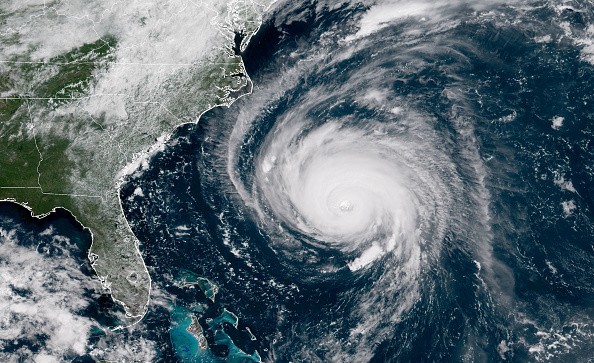Storm surge is the most consequential threat to human life and property with any landfalling hurricane. As the level of the sea rises, these impacts are anticipated to become even more consequential.

Hurricane Laura
Jamie Rhome, who heads the storm surge unit at the National Hurricane Center (NHC) said: "The ocean is rising completely and it's going to keep rising, which is going to bring about greater problems and susceptibility to storm surge." Hurricane Laura that occurred in 2020, made landfall on the southwest coast of Louisiana as a monstrous Category 4 storm.
Rhome said: "The big story with Hurricane Laura was the very high [storm surge] forecast of about 15 to 20 feet, then we added the adjective 'un-survivable' to that which is harsh language you don't usually see from the National Hurricane Center."
So, could such a term ever be made use of here in South Florida, CBS4 meteorologist Jennifer Correa inquired from Rhome. "Yeah definitely. There are parts of southern Dade, a storm surge can push inland about 10 to 15 miles. Definitely, go through Cutler Ridge, get into the regions and suburbs behind it," said Rhome. This kind of threat calls for measures by the NHC to have a more precise forecasting tool.
Storm Surge Forecast
The storm surge unit has improved its forecast model early for the 2021 hurricane season. This recent upgrade will not only give a more accurate storm surge forecast but also boost evacuation times by 12 hours.
"Which doesn't appear like too much but when it comes to making decisions for evacuation and the ability to pack your house and relocate, 12 hours is like forever," said Rhome.
The improved model will also aid in eliminating irrelevant evacuations because Rhome explains that if you don't have to leave you're possibly exposing yourself to higher risk by evacuating.

Storm Surge
A storm surge is a rise in the level of the sea that takes place during tropical cyclones, intense storms also referred to as hurricanes or typhoons. The storms bring about strong winds that force the water into shore, which can cause flooding. This makes storm surges very risky for coastal regions.
Tropical cyclones are circular storms are represented by heavy rainfall and high winds. They form over tropical oceans which are usually warm. The center of a cyclone is referred to as the eye. The eye is encircled by a ring of clouds known as the eye wall, where the winds are very powerful.
Encircling the eye wall are clouds that spiral outward, referred to as spiraling rain bands. A storm surge is majorly caused by winds and the ocean's surface relationship. The water level rises where the winds are very powerful. Also, water is forced towards the direction of the blowing winds.
For more news, updates about hurricane and similar topics don't forget to follow Nature World News!
© 2025 NatureWorldNews.com All rights reserved. Do not reproduce without permission.





